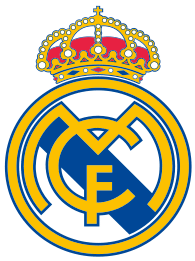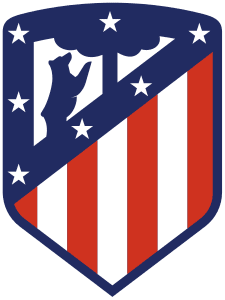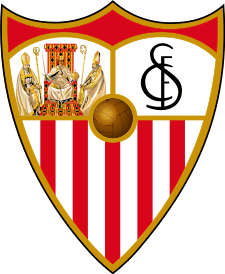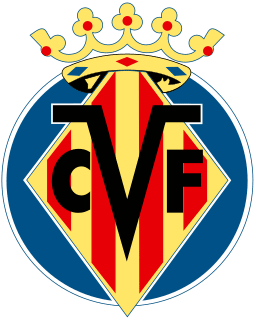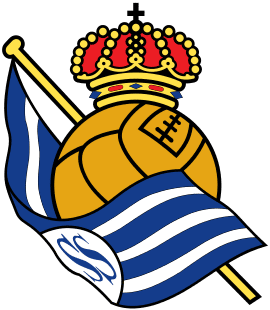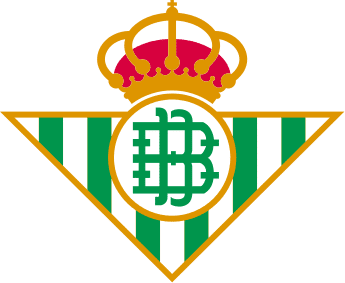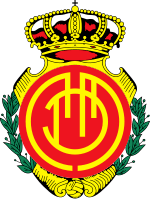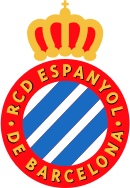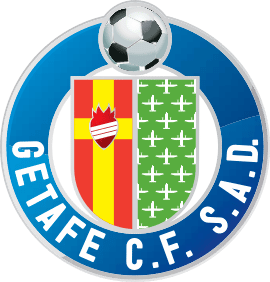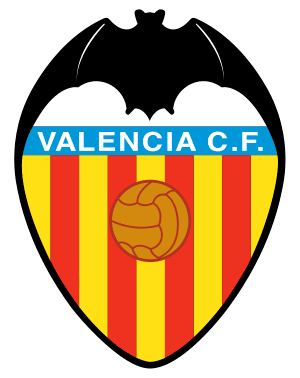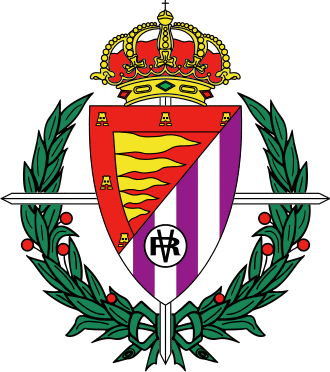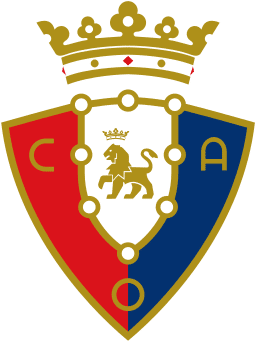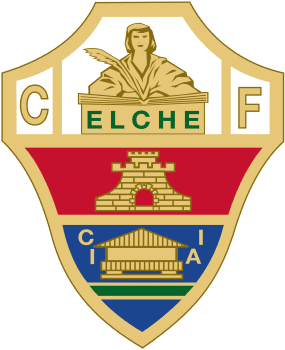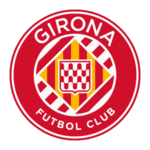Real Madrid CF Tryouts & Club Guide: History, Stadium, Players, and More!

Welcome!
Discover the world of soccer with fcscout.com, your go-to scout for club tryout information, club guides, player profiles, in-depth product reviews, and more. We’re dedicated to exploring and revealing the best in each domain, empowering you with knowledge to make informed choices.
Thank you for being here!
Hi, I’m Carlos! A coach, sports enthusiast, and the founder of FCScout.com.
I fell in love with the game at a very young age like many of you. I’ve been following and playing soccer for many years.
Throughout my career, I always enjoyed helping soccer players chase their dreams, which is why I started this website. I wanted to reach a larger audience outside of my local area and fcscout.com was born.
This website is a platform I will be using to update club pages on any tryouts, stadiums, players, tech, and more from clubs around the world. I also create free recruitment profiles for players looking to have that extra competitive edge when reaching out to clubs.
That’s it. That’s my pitch for you to stick around (or browse the site as you please).
This is already too much text for a “see more” drop-down button thing. If you want to reach out to me, head on over to my contact page 🙂

Real Madrid Club de Fútbol, meaning Royal Madrid Football Club), commonly referred to as Real Madrid, is a Spanish professional football club based in Madrid.
Real Madrid CF Youth Development System
La Fábrica (English: “The Factory”) is the name given to Real Madrid’s farm system and academy. Considered one of the best player development centers in the world, La Fábrica has produced a number of players that have contributed to Real Madrid’s sustained sporting success since its inception.
La Fábrica is housed in Ciudad Real Madrid, Real Madrid’s training facility located in Valdebebas. La Fabrica consist of Real Madrid Castilla, Juvenil A, Juvenil B, Juvenil C, Cadete A, Cadete B, Infantil A, Infantil B, Alevin A, Alevin B, Benjamin A, Benjamin B, and PreBenjamin.
Real Madrid Castilla
Real Madrid Castilla Club de Fútbol is a Spanish football team that plays in Segunda División B. It is Real Madrid’s reserve team. They play their home games at Alfredo Di Stéfano Stadium with a capacity of 6,000 seats.
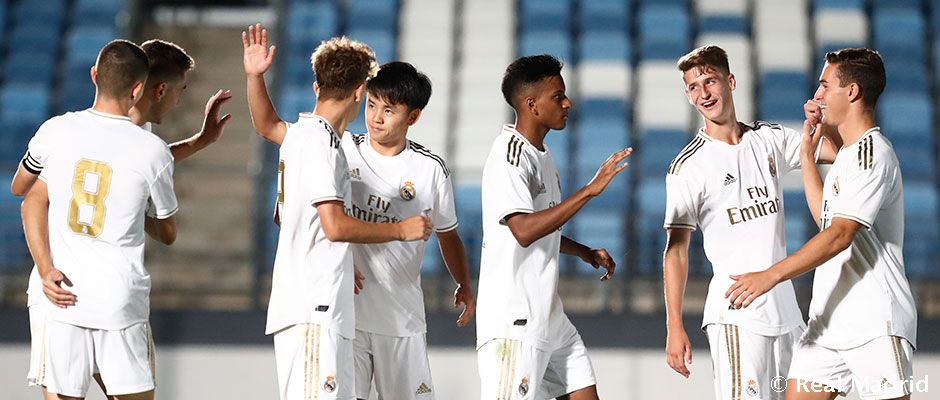
For a full team lineup of Real Madrid Castilla players and games, please click here.
Real Madrid Juvenil A (U19)
Real Madrid Juvenil A Club de Fútbol is a Spanish football team that plays in the Division de Honor and UEFA Youth League. It is Real Madrid’s U19 team.
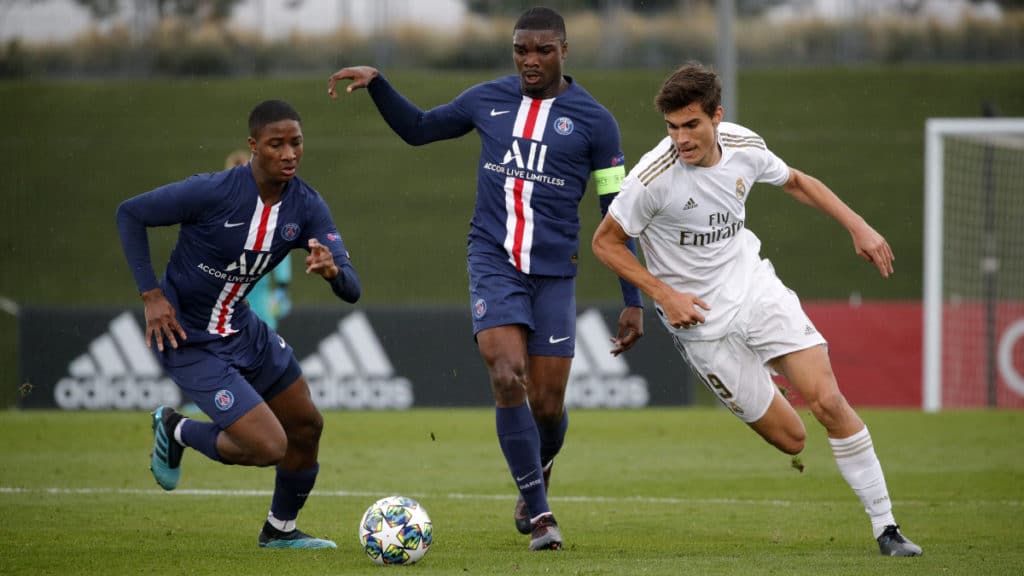
For a full team lineup of Real Madrid Castilla players and games, please click here.
Real Madrid CF Tryouts/Trials
For more than 117 years, Real Madrid has promoted the practice of sport, understanding the benefit it entails for physical and mental development, while allowing values such as effort, perseverance, respect, companionship, to be learned and put into practice. humility… values that we have always represented as an institution. The Real Madrid youth academy is looking for young talents who have the dream and the ambition to make history at our Club. If you want to do an access test to our quarry here you will find the necessary information.

On the day of the test you will live a unique and unforgettable experience enjoying the modern facilities of Real Madrid City, the place where your idols and also young talents train with the excitement and enthusiasm of those who face a great challenge and want to demonstrate all the potential it treasures. Real Madrid intends to make you live a special day where through the practice of your favorite sport you can interact with other children and show your sportsmanship.
The tests can be performed by players, who must be accompanied by their father, mother or guardian. We do tests every month of the year except the summer months from June to August. If you want to participate, you must request it by filling in the following questionnaire that can be found by clicking here.
Good luck and Hala Madrid!
EXPLORE MORE CLUBS!
Explore more professional clubs by continent.
Real Madrid United States Camps
The Real Madrid Foundation Soccer Camps offers the unique and exciting opportunity to experience specialized soccer training, bringing their expert UEFA coaches selected by the Academy of the world’s most successful soccer team to help you improve your soccer skills.
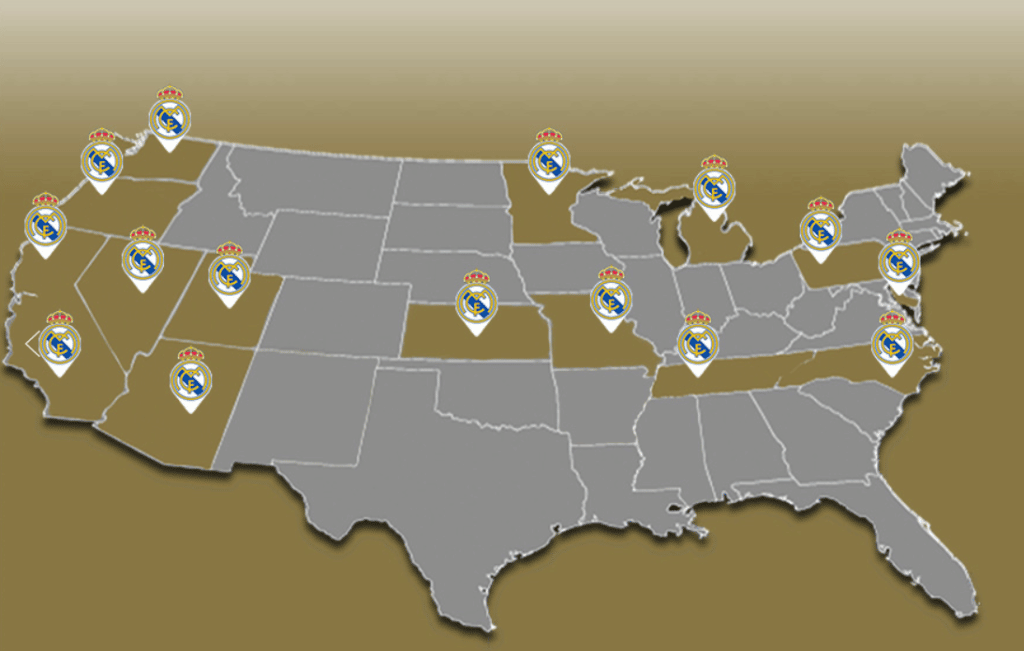
You can enjoy the Real Madrid spirit in any of the19cities throughout the country where we will celebrate our clinics: Portland, Seattle, San Francisco, Sacramento, San Jose, San Diego, Nashville, St. Louis, Minneapolis, Philadelphia, Washington, D.C., Baltimore, Charlotte, Salt Lake City, Pittsburgh, Detroit, Las Vegas, Phoenix, Wichita
For more information or to register, please click here to visit their website.
Real Madrid CF History
The Madrid Football Club was established on March 6, 1902, and has worn a white home uniform ever since. King Alfonso XIII presented the club with the term “real,” which is Spanish for “royal,” and the royal crown in the club’s insignia in 1920. Since 1947, the team has held its home games in the 81,044-seat Santiago Bernabéu Stadium in the heart of Madrid. Real Madrid’s members, or socios, have owned and run the club for the entirety of its existence, in contrast to the majority of European sports organizations.
With an estimated value of €3.8 billion ($4.2 billion) and annual income of €757.3 million in 2019, the club was the second-highest-earning football club in the world. The team is among the most well-liked in the entire world. Along with Athletic Bilbao and Barcelona, Real Madrid is one of only three original members of La Liga to have never been demoted from the top flight since the league’s creation in 1929. The club has many enduring rivalries, most notably El Clásico and El Derbi with Barcelona and Atlético Madrid, respectively.

In the 1950s, Real Madrid became a dominant force in both Spanish and European football after winning five straight European Cups and making seven final appearances. The club repeated this feat in the league, which it won five times in a span of seven years. Some in the sport believe that this group, which comprised Raymond Kopa, Ferenc Puskás, Francisco Gento, and Alfredo Di Stéfano, was the best team ever.
The team has won 66 medals in Spanish football, including a record 34 La Liga championships, 19 Copa del Reys, 11 Supercopas of Spain, a Copa Eva Duarte, and a Copa de la Liga. Real Madrid has won a record 26 trophies in European and international competitions, including a record 13 European Cup/UEFA Champions League victories, two UEFA Cups, and four UEFA Super Cups. They have won a record seven club world championships in international football.
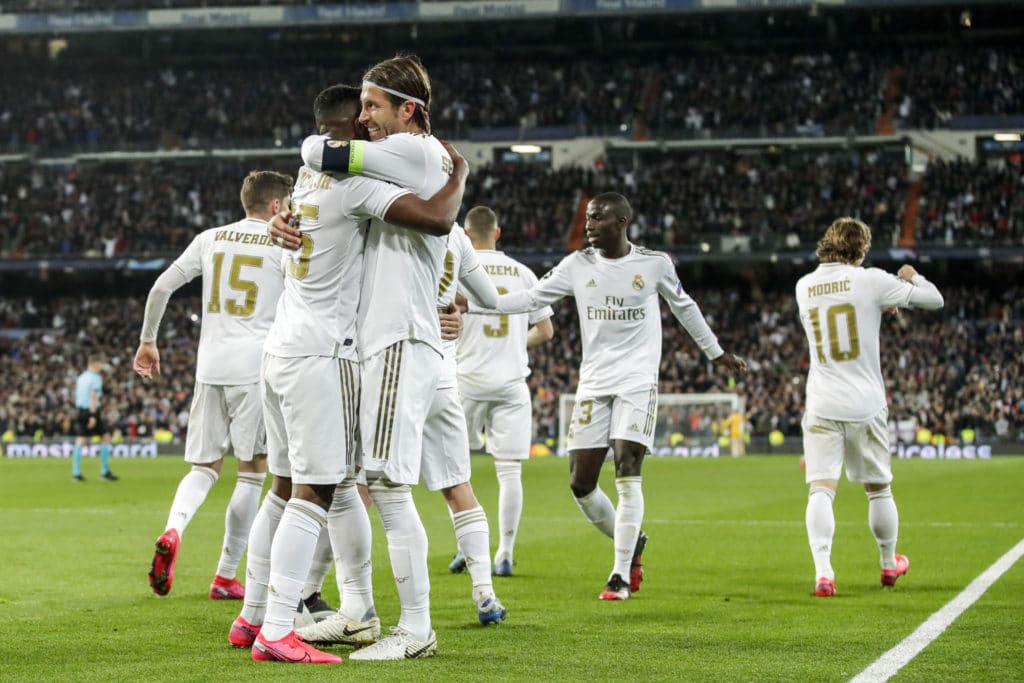
Real Madrid won the FIFA Centennial Order of Merit on 20 May 2004 after being voted the FIFA Club of the 20th Century on 11 December 2000. On May 11, 2010, the IFFHS recognized the club as the Best European Club of the Twentieth Century. As of May 2018, the team has won three straight Champions League titles and four in the last five seasons, cementing their position at the top of the UEFA club rankings. Second and third place go to Bayern Munich and Barcelona respectively for Real Madrid as of 2020.
Stadium
In 1912, the team finally settled down at the Campo de O’Donnell after 11 years of bouncing around. After that, the team played for a year at the Campo de Ciudad Lineal, a small stadium that could hold only 8,000 fans. A year later on May 17th, 1923, Real Madrid’s inaugural encounter against Newcastle United took place at Estadio Chamartn, where they would play their home games from that point forward. Real Madrid won the Spanish league for the first time in its history in this stadium, which was attended by 22,500 people. After a few triumphs, Santiago Bernabéu, the club’s newly elected president in 1943, determined that the Estadio Chamartn was inadequate for the club’s aspirations. A new stadium was erected and opened on December 14, 1947. The current name of the stadium, Santiago Bernabéu Stadium, was not given to it until 1955. This was the original name of the stadium when it was built. Real Madrid’s first game at the Bernabéu was a 3–1 victory over Portuguese team Belenenses, with Sabino Barinaga scoring the opening goal.
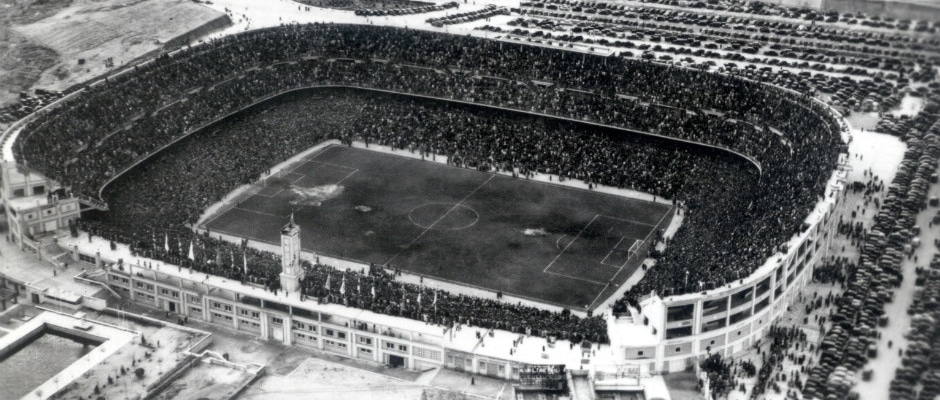
After a 1953 expansion, capacity reached 120,000. Modernizations (the last standing spaces were removed in 1998–99 in response to UEFA laws prohibiting standing during matches in European competitions) have resulted in a number of cutbacks, which have been matched to some extent by additions. There are now 81,044 seats available for use. A retractable roof is being considered. Only Borussia Dortmund, Barcelona, and Manchester United draw larger crowds than Real Madrid’s on a regular basis.
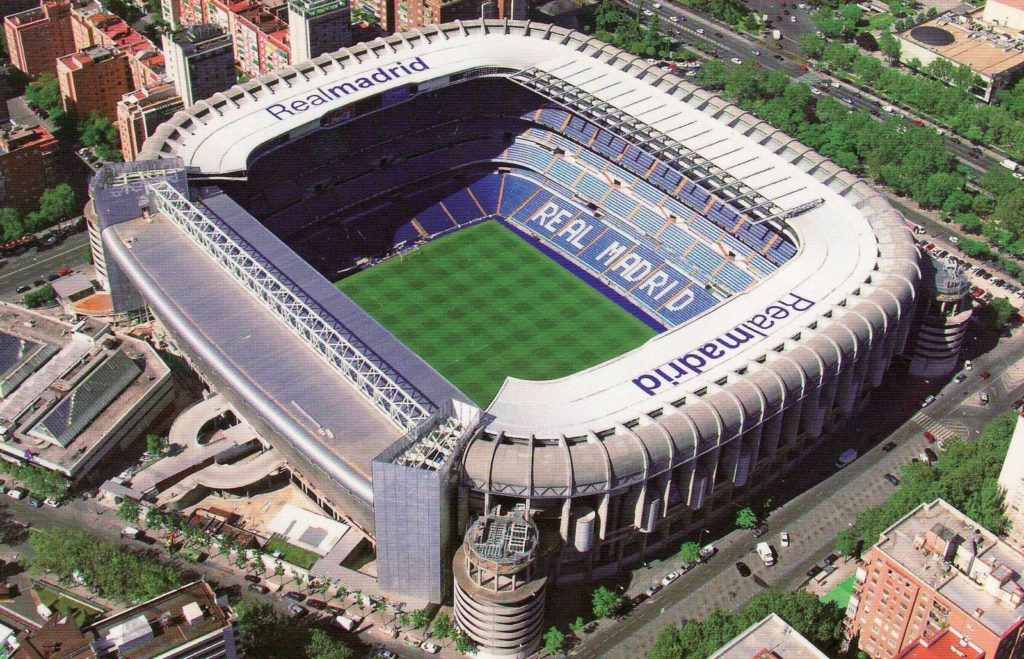
The Bernabéu has hosted the 1964 UEFA European Championship final, the 1982 FIFA World Cup final, the 1957, 1969, and 1980 European Cup finals, and the 2010 UEFA Champions League Final. ” Santiago Bernabéu is a station on the Madrid Metro’s 10 line that serves the stadium. UEFA designated the Bernabéu as an Elite Football Stadium on November 14, 2007.
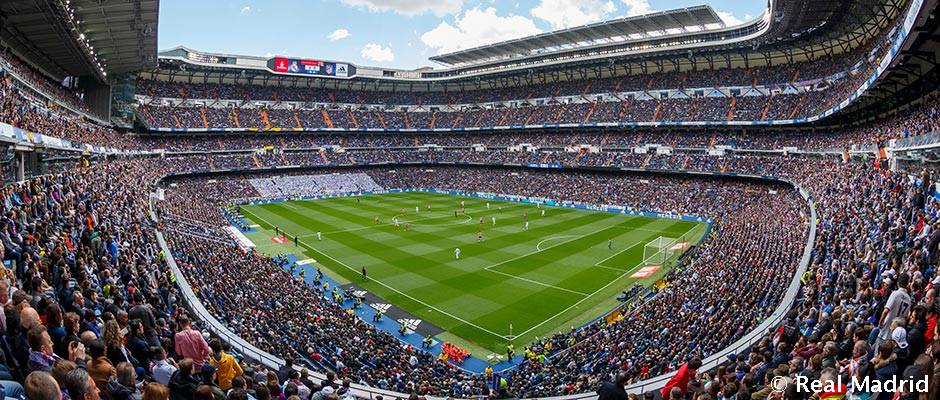
Alfredo Di Stéfano Stadium was officially opened on May 9, 2006 in the Real Madrid City neighborhood where Real Madrid conducts most of their training. As a replay of the European Cup final from 1956, Real Madrid took on Stade de Reims in the inaugural encounter. Six goals by Sergio Ramos, Antonio Cassano (2), Robert Soldado (2), and José Manuel Jurado helped Real Madrid to victory in the match. Citadel Real Madrid’s training facility in Valdebebas has taken over the space previously used by the venue. Real Madrid Castilla play their home games at the 5,000-seat stadium. Alfredo Di Stéfano, a former Real Madrid player, was the inspiration for the name. Due to renovations at the Santiago Bernabéu stadium, the first team has been playing their remaining 2019–20 La Liga home games at the stadium from 14 June 2020.
Crest
“MCF” for “Madrid Club de Ftbol” appeared in dark blue on a white shirt as the club’s letters were interlaced in a stylish manner. In 1908, the letters on the crest were redesigned to be more streamlined and enclosed within a circle. During Pedro Parages’ presidency in 1920, the crest underwent its next major revision. As a result, King Alfonso XIII bestowed upon the team the title “Real Madrid,” which translates as “Royal.” Real Madrid Club de Ftbol now bears Alfonso’s crown on the club’s crest.
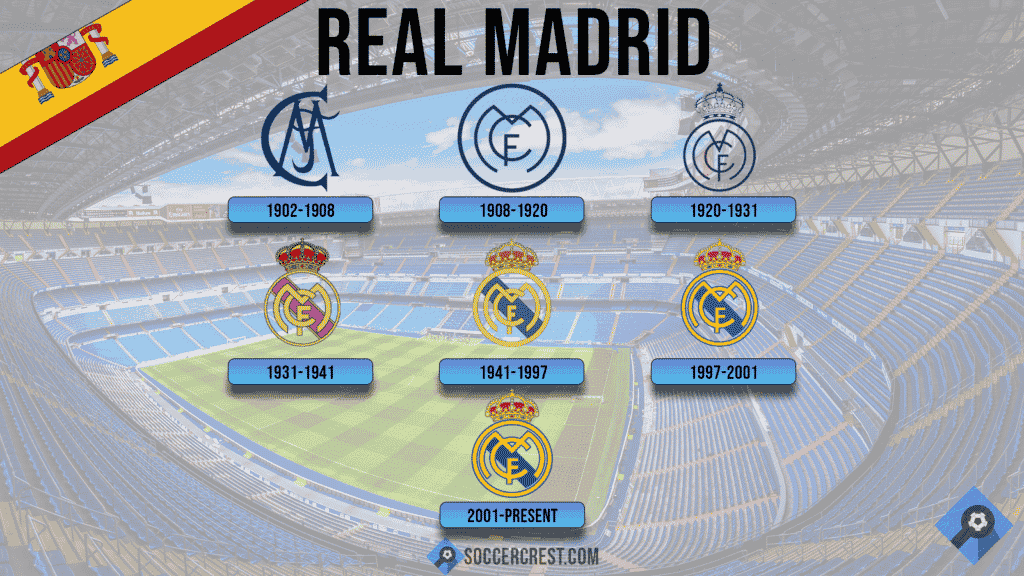
In 1931, when the monarchy was abolished, all of the royal insignia (the crown on the crest and the title of Real) were removed. As an alternative to the traditional crown, the Region of Castile’s dark mulberry band was used. “Real Corona,” or “Royal Crown,” was reinstated in 1941, two years after the end of the Civil War, but Castile’s mulberry stripe was also kept. The club’s name was changed to Real Madrid Club de Ftbol, and the crest was redesigned in full color with gold as the primary accent. During the early 2000s, the club redesigned its crest to better reflect the new millennium and make it more consistent. The mulberry stripe was changed to a bluish tone as one of the changes.
Ownership
Real Madrid is part of a registered association that also includes Barcelona, Athletic Bilbao, and Osasuna. The club president is chosen by Real Madrid’s fans, who own the club. There is no way for the club’s president to invest his personal money in the club, and the club can only spend what it makes from retail sales, television rights, and ticket sales. Membership, not shares, is the only option for purchasing a stake in the club.
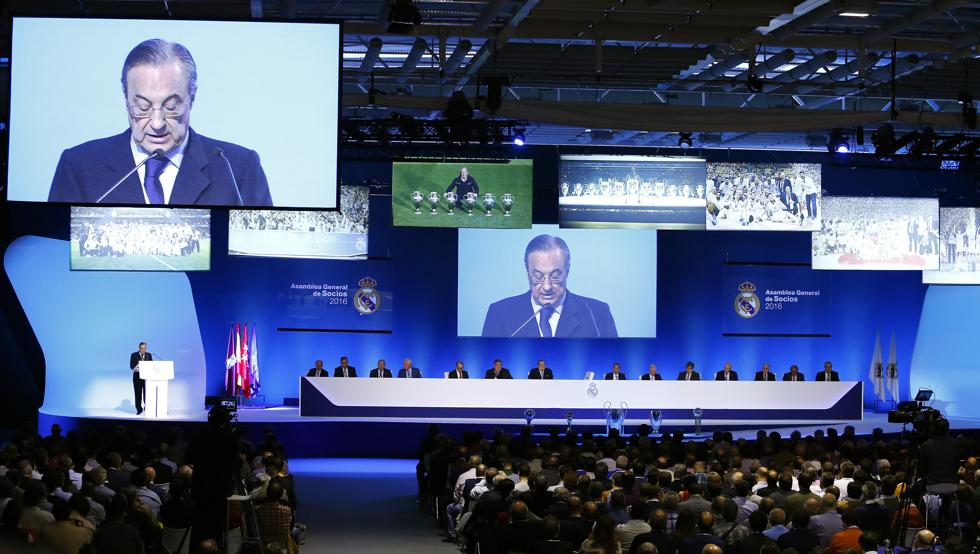
Real Madrid’s socios, or members, form an assembly of delegates that serves as the club’s highest governing body. With 60,000 members as of 2010. The board of directors of Real Madrid reported that at the end of the 2009–10 season, the club had a net debt of €244.6 million, which was $82.1 million less than the previous fiscal year’s net debt. As of December 31, 2011, Real Madrid had a net debt of €170 million. The club made a total of €190 million in profit between 2007 and 2011.
Credits/Resources
This article uses material from the official Real Madrid CF website and affiliates for educational purposes.
Information on fcscout.com is subject to change. Fcscout.com assumes no responsibility or liability for any errors or omissions in the content of this site. The information contained in this site is provided on an “as is” basis with no guarantees of completeness, accuracy, usefulness or timeliness.
Fcscout.com is free of charge with a mission to provide aspiring professional athletes with relevant facts and figures of clubs around the world. We strive to continuously update each clubs page in a timely manner.
